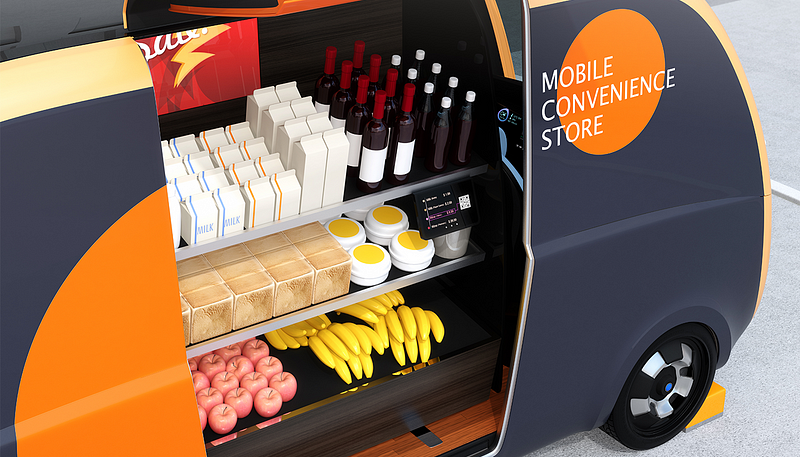Self-Driving Cars Let Retailers Bring the Store to You
When autonomous mobility meets mobile retail, sellers can expand their reach by going where their customers are
Based on the research of Junyu Cao

Autonomous vehicles are having a moment, as self-driving technologies enable vast potential changes in ways of doing business. At Texas McCombs, Junyu Cao, assistant professor of information, risk, and operations management, is bringing them together with another urban trend: mobile retail.
She calls the combination the “stall economy,” a loose translation from Chinese. The idea, she says, is based on street stalls that prospered post-COVID-19 as a way to reboot the Chinese economy.
“We specifically analyze the operations of autonomous self-driving mobile stores for retail,” says Cao. “This service mode brings the store to you, the customer. It combines the convenience of an online order and the in-person experience of the brick-and-mortar store.”
Such mobile retail pop-up shops are gaining ground in this country, especially in the Northeast. Most have been for food, she says, such as Stop & Shop, a mini-grocery store chain that has experimented with mobile grocery stalls.
But Cao says she thinks the retail model is just getting started. Although mobile stalls have limited inventory space, they can be ideal for other small products, such as electronics.
To understand the stall economy’s promises and pitfalls, she and co-author Wei Qi of Tsinghua University in Beijing analyzed data from Toronto, Canada. The 36 geographic areas were a mix of densely populated sections, including downtown and less populated suburbs.
The researchers modeled stall movement speed and other variables at 22,269 locations and various times of day to assess two service modes:
- On-demand, in which the mobile stall moves to meet customers who shop by phone.
- Demand pooling, where groups of customers are sent to one location to meet the stall, improving efficiency.
The researchers found that neither mode was clearly better. Each offered strengths in particular situations.
“In some areas with high demand, it’s better to use demand pooling, because we can serve people in a batch, serve customers continuously, and reduce the repositioning costs,” Cao says.
“When the customer has less patience to wait, and the demand is relatively low, we may do the on-demand.”
Overall, she says, mobile stalls could be more profitable than stationary stores because of the operational flexibility of meeting customers where they are. Thus, self-driving stalls could expand the scope of future retailing.
Cao plans two further studies on the stall economy. One will analyze customer preferences and personalization. Another will review differences between offline orders, which could be delivered the next day, and online orders, which could be delivered within 30 minutes.
“How do we operate those mobile stores to serve those customers and, at the same time, maximize revenue and customer satisfaction?” Cao says. “We’re trying to find the optimal mode for the customer.”
“Stall Economy: The Value of Mobility in Retail on Wheels” is published in Operations Research.
Story by Sharon Jayson
About this Post
Share:


